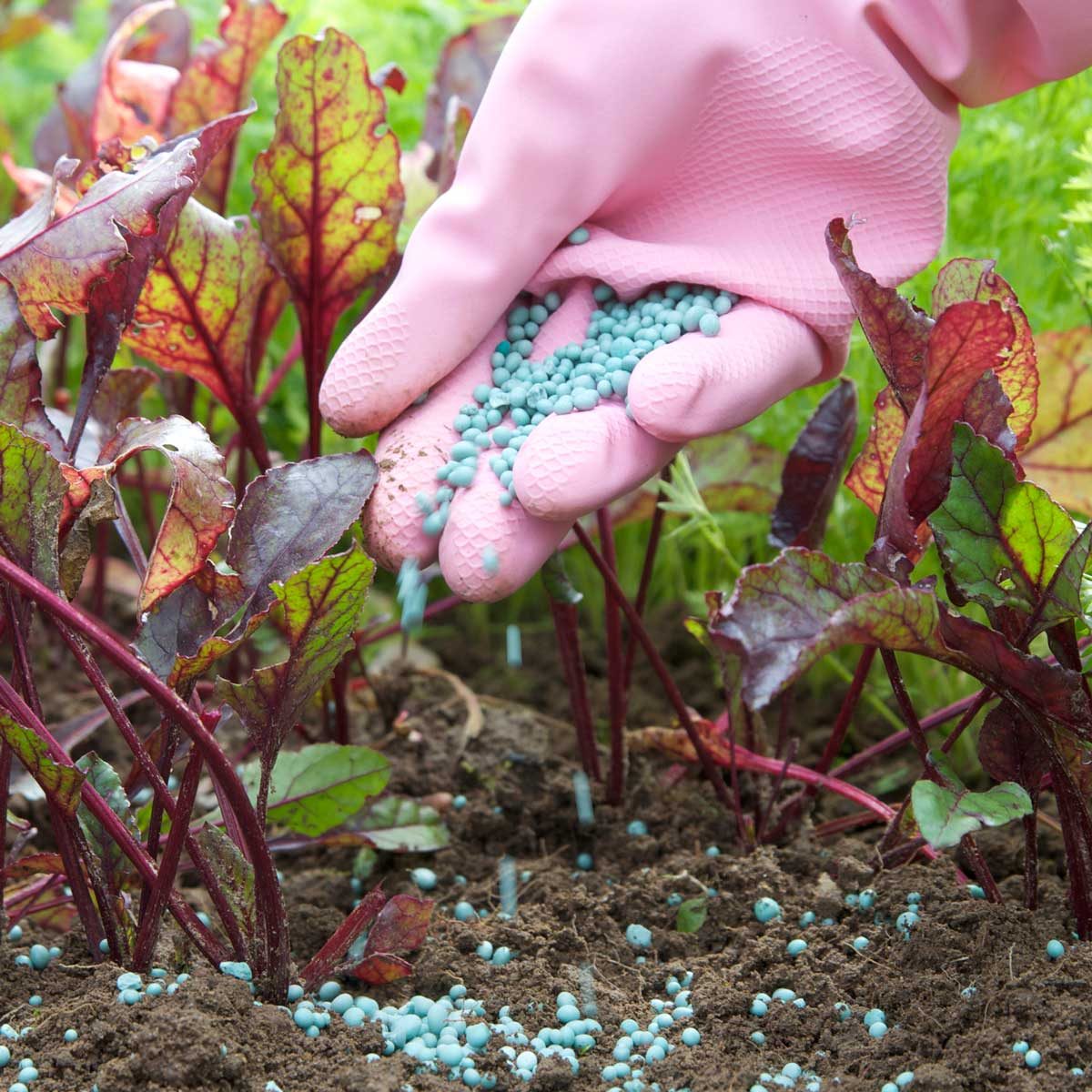 via merchant
via merchant
Wiggle Worm’s organic fertilizer is a natural soil builder that activates depleted soil with natural earthworm castings, aka poop. Fertilizing with worm castings provides long-term nutrition to plants by adding beneficial microbes to the soil. As soil improves, it helps root growth and overall plant health. If your soil already has a lot of earthworms, their castings are nourishing your plants, but if you rarely see a worm in your dirt, your garden will appreciate this naturally occurring by-product of earthworm activity.
This product is suitable for indoor and outdoor plants, trees and shrubs. Unlike other organic fertilizers, the Wiggle Worm soil builder is odorless, so critters aren’t attracted to it.
For heavy-feeding plants, supplement Wiggle Worm with other fertilizers. The NPK ratio is 1-0-0, providing some nitrogen, but more predominantly, it conditions and amends your soil the way nature intended to help your plants absorb nutrients. A little goes a long way, but unlike other fertilizers, you never need to worry about over-fertilizing with worm poop.
Pros
- All-natural formula
- Chemical-free and odorless
- Builds soil
- Can be applied any time of year
Cons
- Can’t be used with a broadcast spreader
 via merchant
via merchant
Epsoma’s lawn food is an eco-friendly way to build soil health and help lawns withstand the perils of winter. This slow-release nitrogen 8-0-5 NKP fertilizer is enhanced with potassium to help the grass recover from the summer heat. This granular fertilizer broadcasts easily with a spreader in late summer and fall, and the 30-pound bag covers 5,000 square feet of turf. We love that this organic fertilizer is safe for pets, people and the planet, too.
Fertilizing in the fall is the best defense against weeds in the spring. When it comes to lawns, Myers recommends using a slow-release nitrogen fertilizer, like this Espoma pick. She also swears by mowing leaves rather than raking to add organic matter. “As long as the pieces are smaller than a quarter and you can see the grass blades, the lawn will be fine,” she says.
Pros
- Helps lawns recover from drought
- Eco-friendly
- Great value
- Formulated for winter protection
- Slow-release nitrogen
Cons
- A more season-specific product
What You Need to Know Before Buying Fertilizer: NPK Explained
Fertilizer labels show three primary micronutrients required for plants to flourish. The three numbers you’ll find on the label refer to the ratio of N-P-K or (N) nitrogen, (P) phosphorus and (K) potassium. In general, nitrogen fosters growth and leaves, phosphorus helps develop roots and enhances blooms and fruit production and potassium supports the plant’s overall vigor and health. A general-purpose fertilizer will have equal or similar NPK ratios.
What Our Expert Had to Say
Finding the best garden fertilizer for your flowers, vegetables, shrubs and lawns can be daunting—unless you’re a horticulturist. Luckily, we consulted one to make the process less scary.
Nationally renowned gardening expert and author, Melinda Myers, explains on her website, “Research has shown that perennials planted in a properly prepared garden need little if any fertilizer. The problem is most people don’t spend the time and money to prepare the soil. If you did, then just add 1 to 2 inches of compost every other year to enrich the soil with nutrients and organic matter.”
What to Look for When Buying a Garden Fertilizer
When it comes to fertilizers, unfortunately, one size doesn’t fit all. Plants have specific nutritional needs that vary with the seasons and growth stages. Myers suggests testing the soil before purchasing fertilizer to discover your lawn or garden’s needs. Keep in mind that some potting mixes include a slow-release fertilizer, so check the labels to avoid over-fertilizing.
- Application type: Granule fertilizer can be mixed with soil, used in a broadcast spreader or utilized as a top dressing. Specially formulated time-release granular fertilizers break down slowly to feed plants with fewer applications than sprays. If you’re looking for immediate results, liquid fertilizers are fast-acting compared to slow-release fertilizers. Liquid fertilizers and teas can be sprayed or sprinkled into the soil or used as a foliar spritz.
- Organic vs. synthetic fertilizers: Organic fertilizers are made from natural matter and contain microorganisms that help plants absorb nutrients. Ingredients in organic fertilizers are derived from plant, animal and ocean materials and help to build soil health. Synthetic fertilizers are derived from processed minerals and feed roots effectively, but are void of beneficial organisms and deplete the soil of nutrients.
How We Found the Best Garden Fertilizers
With hundreds of garden fertilizers on the market, I researched products with proven results and high real-life customer satisfaction. I also relied on the knowledge of horticulturist, Melinda Myers, to get an expert’s take.
While going through top-rated garden fertilizers, I looked at NPK ratios, ingredients and soil-building qualities. Plus, as a veteran organic gardener, I hope that readers will consider switching from synthetic fertilizers and pesticides and look to organic products and sustainable gardening practices that contribute to long-term soil health.
FAQ
What is the best fertilizer for garden plants?
If you can compost or add shredded leaves to your plots every fall, it will enhance your soil health and subsequent plant health. Using compost and organic matter adds nutrients to the soil and feeds plants naturally, whereas synthetic fertilizers help your plants grow, but they may lack beneficial soil-building microbes and can create havoc on aquatic life and insects that are beneficial to the environment. For the best soil vitality, we recommend organic fertilizers and conditioners with microbes. Be warned: Organic fertilizers can have a strong odor.
Is 10-10-10 good for a vegetable garden?
A 10-10-10 fertilizer is considered an all-purpose fertilizer because it can be applied to most types of plants that need a boost of nutrients. However, when applying a 10-10-10 to flowering plants (including vegetables), be cautious about the timing, as it could boost foliage rather than flowers due to the high nitrogen content. A 10-10-10 balanced ratio all-purpose fertilizer is best applied in the spring to promote growth.
Source:






























